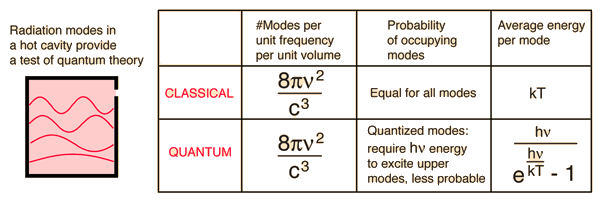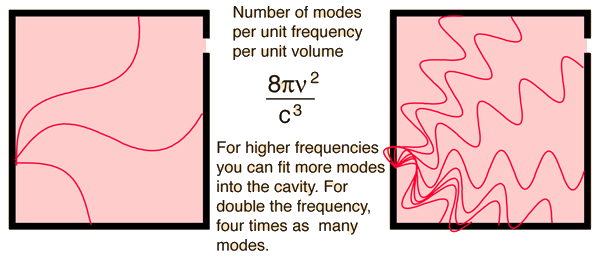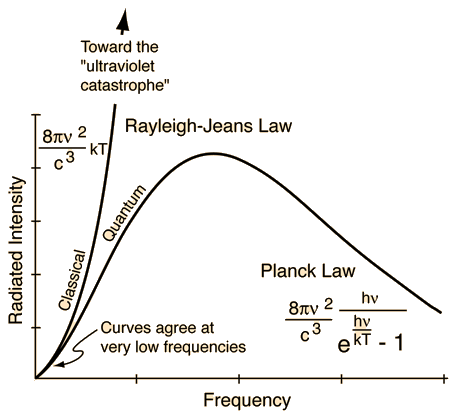Blackbody Radiation
"Blackbody radiation" or "cavity radiation" refers to an object or system which absorbs all radiation incident upon it and re-radiates energy which is characteristic of this radiating system only, not dependent upon the type of radiation which is incident upon it. The radiated energy can be considered to be produced by standing wave or resonant modes of the cavity which is radiating.
| The amount of radiation emitted in a given frequency range should be proportional to the number of modes in that range. The best of classical physics suggested that all modes had an equal chance of being produced, and that the number of modes went up proportional to the square of the frequency. But the predicted continual increase in radiated energy with frequency (dubbed the "ultraviolet catastrophe") did not happen. Nature knew better. |
 |
Why more modes at higher frequency? | The experimental radiation curve. |
Blackbody radiation concepts
Great experiments of physics
| HyperPhysics***** Quantum Physics | R Nave |












